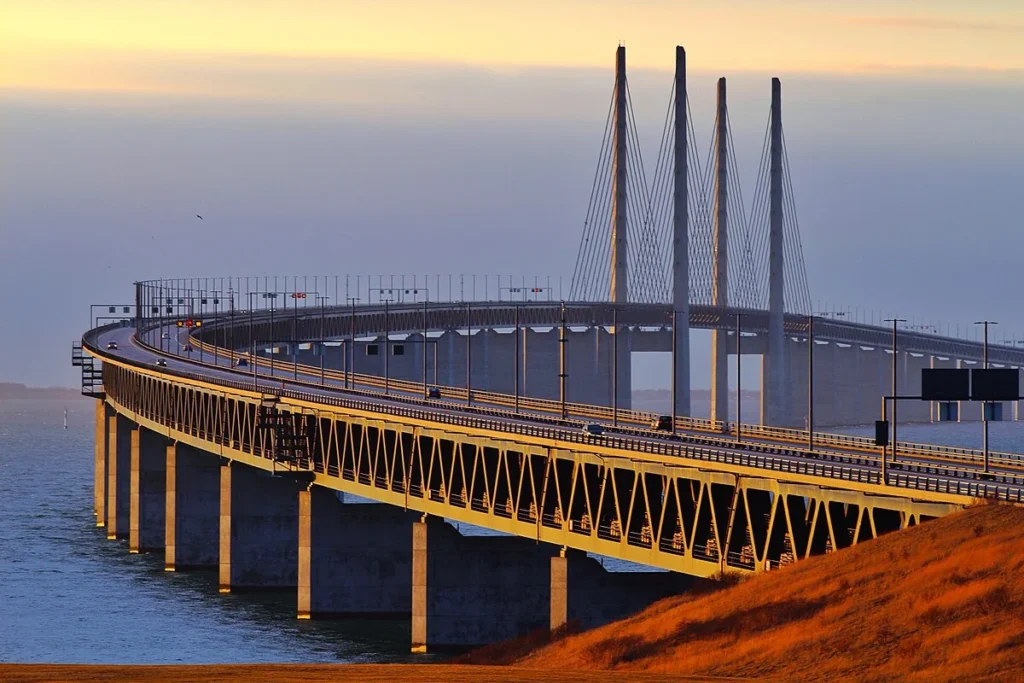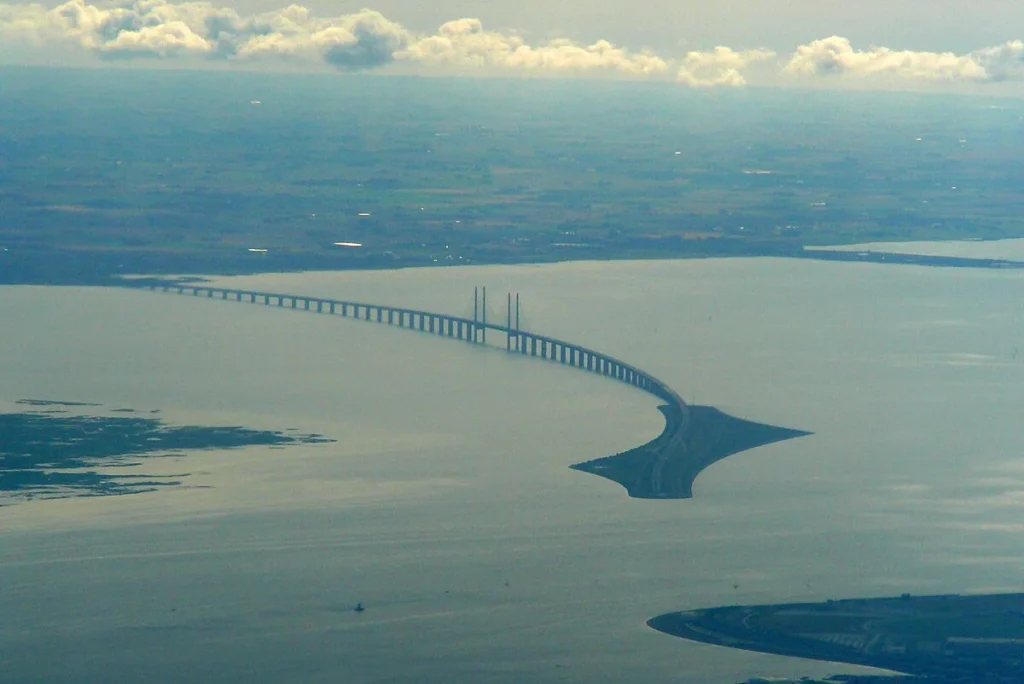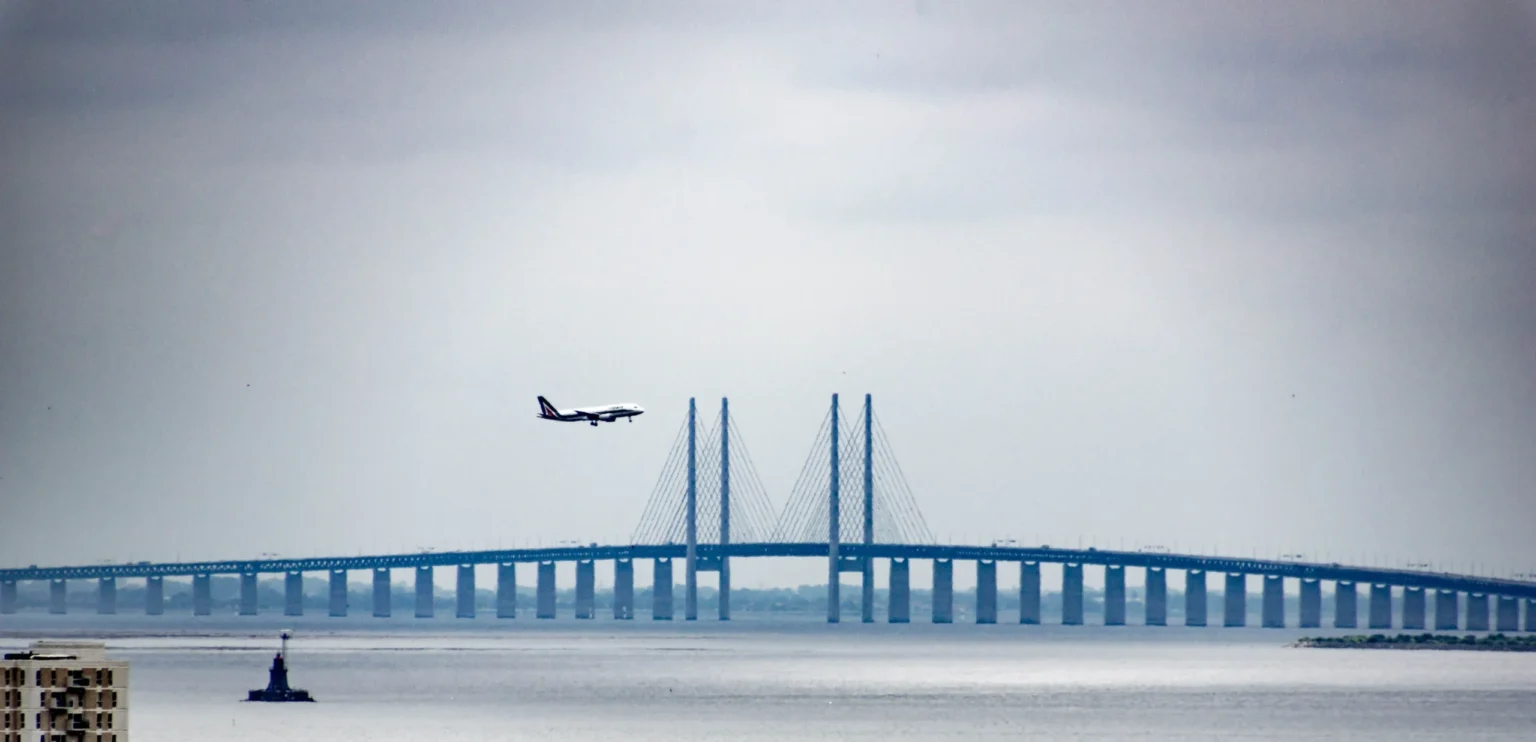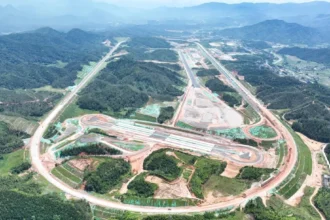July 2025 marks 25 years since the Øresund Bridge began carrying traffic between Denmark and Sweden. This combined bridge and tunnel link spans nearly 16 km and has evolved into one of Europe’s most symbolic infrastructure projects.
But recent toll hikes are testing goodwill among cross-border commuters already navigating daily logistics between Copenhagen and Malmö.
A Quarter Century of Connection

Opening in July 2000, the Øresund Link comprises an 8 km cable-stayed bridge on the Swedish side, a 4 km artificial island called Peberholm, and a 4 km immersed tunnel to Denmark.
Above, four lanes of E20 motorway; below, the Øresund Line railway runs between the two capitals. It is the second longest combined road-and-rail bridge in Europe.
This design overcame challenges such as preserving air traffic paths into Copenhagen Airport and allowing ships and ice flows passage in the Øresund strait.
On 1 July 2025, Danish Prime Minister Mette Frederiksen and Swedish Prime Minister Ulf Kristersson adopted a joint declaration to mark the bridge’s anniversary.
The declaration highlighted efforts to simplify living and working across the Øresund region and deepen economic and security cooperation.
A Game-Changing Boost to the Region
Before the Øresund bridge, commuting between Sweden and Denmark meant a ferry or long transit—now the journey takes minutes. Over 21,000 people commute daily between Malmö and Copenhagen, with 96 percent living in Sweden and working in Denmark.
Economic benefits have been impressive. Since the Øresund bridge opened, the Øresund Region’s labour market has grown to over 4.2 million people.
Cross-border economic gains reached DKK 57 billion or SEK 78 billion (€8.4 billion), and commuting helps address skill shortages while adding DKK 6 billion in value per year.
Traffic hit record highs in 2024, 38 million crossings across road, rail, and ferry. That averages over 100,000 trips per day. Road volume reached 7.6 million vehicles for the year. Rail passenger numbers also surged.
Rising Traffic and Revenue
Data from Sund & Bælt shows vehicle traffic increased by 4.3 percent in Q1 2025 compared to the previous year. Passenger cars rose by 4.4 percent and heavy goods traffic by 3.2 percent. Road revenue from the Øresund Link reached DKK 351 million, up by 4.8 percent.
Meanwhile the sister link in Denmark, the Storebælt Bridge, also saw rising traffic, though revenue fell due to a government-driven price reduction under the Eurovignette directive.
Commemorating 25 Years with a Bridge Run
One of the standout anniversary events was the Øresund Bridge Run on 15 June 2025. Approximately 40,000 participants, Danes, Swedes, and international guests, ran a 21 km course across the bridge and tunnel, an experience unique to the region.
Travel capacity was temporarily reduced during the event and road users were advised to avoid crossing between 6 a.m. and 5 p.m.
Organizers described the event as a lifetime experience. One runner noted that for most, it was the only chance to walk where cars and trains normally run. Safety involved careful coordination between Danish and Swedish authorities.
Toll Hike Sparks Criticism
Despite its success, the bridge’s rising tolls have drawn criticism. In June 2025, the price for a one-way car trip jumped to approximately DKK 510 (£58), making it the most expensive intercountry bridge by some measures.
For vans, the one-way cost is around £218. Many commuters describe the toll as “daylight robbery” especially since consistent yearly rises make daily crossing unsustainable for some.
Commuters such as Tommy Frandsen and Aravin Chakravarthi described how tolls now eat into more than 10 percent of their take-home pay. Some have switched from driving to longer train or ferry routes to cut costs.
Efforts to lower the toll are constrained by legal obligations to maintain ferry operator viability under Danish law.
Still, sentiment remains mixed. Many locals express deep affection for the bridge and appreciate the region’s integration, despite frustrations with price.
Once Divided, Now United
A Guardian analysis noted that Malmö lagged Copenhagen’s economic success for years. Yet after the bridge opened, Swedish businesses moved south, Malmö transformed and daily life changed.
One commuter said that life before the bridge was unmanageable. The daily commute is now routine even for families with children and complex work patterns.
Still, challenges persist. Administrative differences between the two countries complicate taxation, social security, and professional qualifications. Train delays and overcrowding are frequent, especially in peak hours.
Future Infrastructure and Mobility
Looking ahead, feasibility studies are underway for a metro tunnel between Copenhagen and Malmö, estimated to cost some €3.5 billion. That would reduce commuting time dramatically.
And the upcoming Fehmarn Belt Tunnel, due to open at the end of the decade, will link Denmark to Germany and funnel traffic into the Øresund route, increasing its strategic importance.
Maintenance contracts are in place through 2031 for tolling and point-of-sales technology provided by Kapsch TrafficCom. That system handles almost 600,000 vehicles monthly.
Engineering Marvel with a Deeper Legacy

The Øresund Link is hailed as a modern engineering marvel. Two pylon towers rise 204 metres above the roadway. At the heart is a main span of 490 metres, supported by an intricate cable-stayed network.
The artificial island Peberholm also created a thriving marine habitat under its underwater structure.
In 2002, it received an award from the International Association for Bridge and Structural Engineering.
It also carries one of the most important data cables for internet transmission between central Europe and Sweden.
Commuters and Culture
In the growing Øresund Region, nearly 100,000 crossings occur daily by road, rail, and ferry. Monthly totals rise above 800,000 vehicles in summer. Electric cars now constitute over 12 percent of vehicle crossings.
Commuter culture has evolved. Many workers cross between countries while their families live on the other side.
According to research, commuting across the strait has restored regional labor market integration and lifted wages.
Balancing Vision and Accessibility
The bridge has undeniably created prosperity and connection. But high costs and lingering service issues limit everyday access for some commuters.
The region remains divided by national systems even as daily life crosses borders fluidly.
Denmark and Sweden’s 25th-anniversary declaration commits to removing barriers to cross-border living and working, enhancing safety, competitiveness, and mobility. The goal is 30,000 daily commuters by 2030.
Final Thoughts
The Øresund Bridge is more than a path across water. It is a story of cooperation, engineering ambition, and community integration. At 25 years old, it has reshaped lives, economies, and identities.
But rising tolls, strained commuter services, and administrative hurdles show that successful infrastructure can still have rough edges.
For anyone interested in European connectivity and cross-border urban futures, the Øresund Link remains a powerful case study.
It proves a well-built bridge is not just metal and concrete, it is a vision shaped into reality, worthy of celebration and critical examination.












